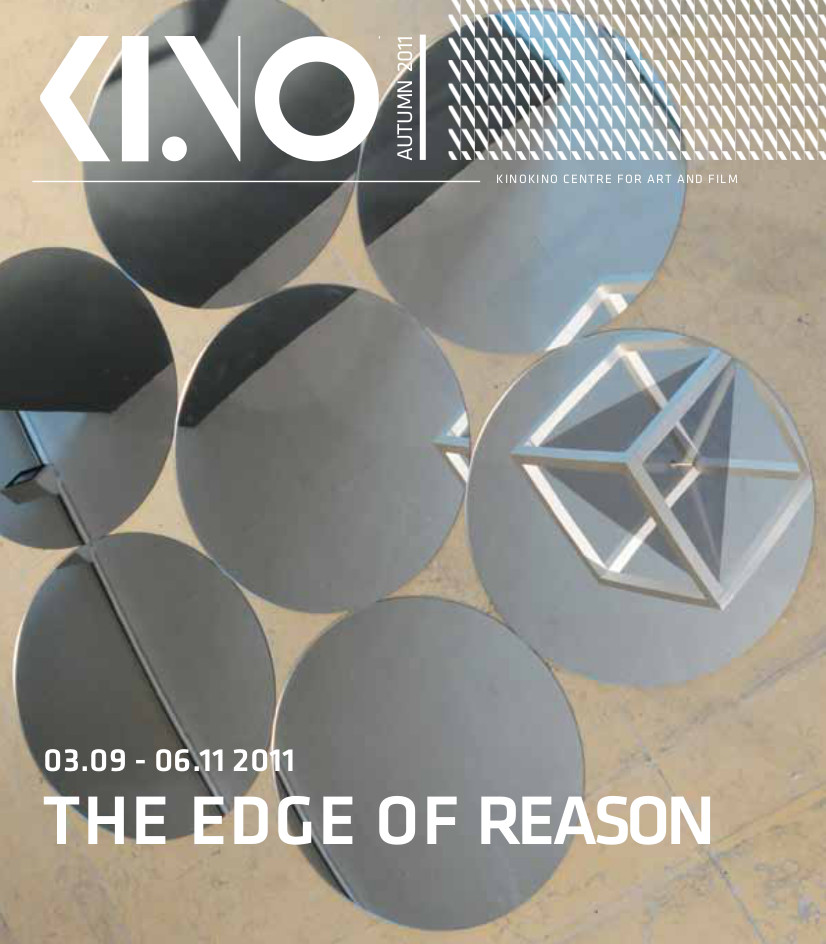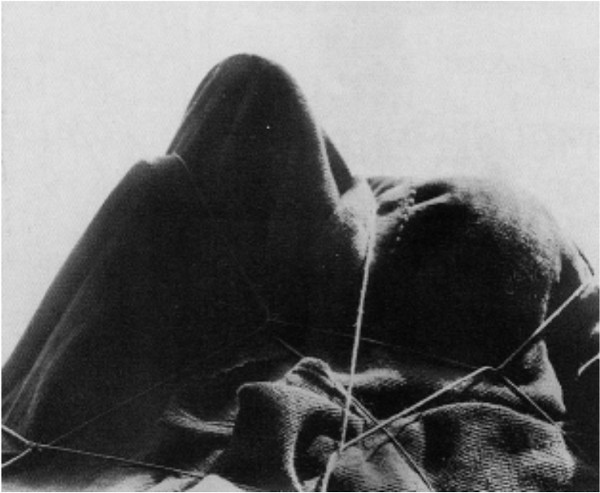The Edge of Reason, catalogue (2011)
Filed under catalogue | Tags: · art, irrational, mysticism, occultism, rationalism, science

The exhibition The Edge of Reason, curated by Norwegian and London-based artists Sidsel Christensen and Ben Judd in 2011 in the KinoKino centre in Sandnes, Norway, explored notions of authenticity and belief, inviting viewer to have a first-hand experience of a world beyond the senses.
Christensen and Judd invited artists whose work helps to trace a historical overlapping in the development of the empirical and scientific with the irrational and mystical. The artists in the exhibition presented a duality of experience, by moving in-between a sceptical enquiry and a more internalised visionary engagement to explore the unknown.
Artists: Sidsel Christensen, Marcus Coates, Maya Deren, George Gurdjieff, Susan Hiller, Ben Judd, Hilma af Klint, Susan MacWilliam, Oscar Muñoz, Karen Russo (with Jeremy Millar, Shezad Dawood, Mark Titchner), Jane and Louise Wilson.
The catalogue contains transcript of a 2011 séance contacting the Swedish pioneer of abstract art and mystic Hilma af Klint (1862—1944; pages 16-23).
Publisher KinoKino Centre for Art and Film, Sandnes, Norway, 2011
56 pages
The Shape of Experiment (2006)
Filed under proceedings | Tags: · art, art history, experiment, experimental art, history of science, history of technology, science, technology

What is the result of recent studies on the history of experiment? How has our image of science been changed since Ian Hacking’s statement, “experimentation has a life of its own,” turned into a catch phrase for investigations into the history of science? What is the lesson to be drawn from the studies following Steven Shapin’s and Simon Schaffer’s Leviathan and the Air Pump (1985) and Peter Galison’s How Experiments End (1987)?
In trying to answer these questions, this conference did not aim at contributing to a more developed philosophy of scientific experimentation, nor did it try to return to the grand narratives on the history of science. Rather, the goal of this conference was to identify characteristic configurations within in the history of experimentalization from 1800 to the present. The guiding question was: what are the typical forms of experiment that emerged in the separated and shared history of science, technology, and the arts?
Conference: The Shape of Experiment, Berlin, 2-5 June 2005
Publisher Max-Planck-Institute for the History of Science, Berlin
Preprint series, No. 318
235 pages
conference (prepared by Julia Kursell, Sven Dierig, and Henning Schmidgen)
publisher
Esther Leslie: Synthetic Worlds: Nature, Art and the Chemical Industry (2005)
Filed under book | Tags: · aesthetics, art, chemistry, history of science, industry, nature, science

Synthetic Worlds considers the remarkable alliance between chemistry and art, taking us from the late eighteenth century to the period immediately following the Second World War. Esther Leslie offers fascinating new insights into the place of the material object and the significance of the natural, the organic, the inorganic and the synthesized in this poetics of science.
Through its dazzling innovations, which began in the nineteenth century, chemistry has granted new colours and surfaces, new substances, coatings and textures to the world. Often they are the result of accidents or the by-products of pollution. Chemistry has also invented simulants and surrogates for naturally occurring materials. Sometimes these developments confounded earlier alchemical and Romantic philosophies of science and nature, but, at other times, dynamic theories of chemical action combined with the emergent chemistry textbook orthodoxy. For example, the colour wheels of Goethe and Philipp Otto Runge, Hegelian theories of a spirit that inhabits dyes and ‘drives’ materials, and Romantic ideas of the weddings of substances influenced the experiments that boosted the successful German chemical industry after the 1840s. In turn, chemistry’s discoveries seeped back into philosophy and art.
Esther Leslie’s Synthetic Worlds considers this and other startling affinities between chemistry, industry, aesthetics and art. Themes include the impact of artificial imitations and synthetics, the location of value, the mutability of substance, chemical fragility and artistic technique, the poetics of the inorganic and pollution, Bauhaus-influenced modulation and patina in art practice, and nationalist narratives of chemical breakthrough.
Publisher Reaktion Books, 2005
Art, Industry and Industrial Studies series
ISBN 1861892489, 9781861892485
280 pages
review (Sophia Efstathiou, Hyle)
Comment (0)
